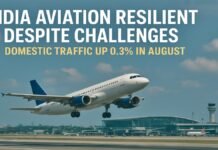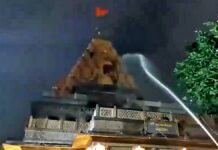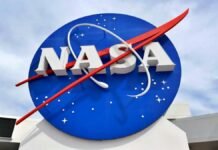
Key Points:
- NASA astronauts Sunita Williams, Butch Wilmore, and Russian cosmonaut Alexander Gorbunov returned safely to Earth after a nine-month stay aboard the ISS.
- Extended exposure to microgravity causes muscle atrophy, bone density loss, vision changes, and conditions like “baby feet.”
- Astronauts undergo a structured 45-day rehabilitation program to readjust to Earth’s gravity.
- Immediate symptoms upon return include dizziness, nausea, balance issues, and weakened immune systems.
NASA astronauts Sunita Williams and Butch Wilmore, along with Russian cosmonaut Alexander Gorbunov, successfully returned to Earth aboard SpaceX’s Crew Dragon spacecraft on Wednesday. Originally scheduled for an eight-day mission aboard Boeing’s Starliner spacecraft in June 2024, the astronauts were forced into an extended nine-month stay at the International Space Station (ISS) due to technical malfunctions involving helium leakage and velocity loss.
Their dramatic splashdown near Florida’s coast marked the end of a challenging yet historic mission.
Health Challenges Post-Spaceflight
While floating effortlessly in microgravity appears fascinating, prolonged exposure significantly impacts astronauts’ health. Upon returning to Earth’s gravity, Williams, Wilmore, and Gorbunov are expected to face several physical and physiological challenges:
Muscle Atrophy and Bone Loss
In space, muscles weaken rapidly due to lack of gravitational resistance. Astronauts lose approximately 1% of their bone density per month equivalent to a year of aging on Earth. This increases their risk of fractures and osteoporosis. Despite rigorous daily exercise routines aboard the ISS including treadmill running and resistance training—astronauts still experience noticeable muscle deterioration upon return.
Vestibular System Disruption
The vestibular organs within the inner ear help maintain balance by sensing gravity. In microgravity environments like the ISS, these organs adapt differently. Upon returning to Earth, astronauts often experience dizziness, nausea (“gravity sickness”), difficulty walking straight, and trouble maintaining balance as their brains readjust to Earth’s gravitational pull.
“Baby Feet” Condition
Astronauts frequently develop “baby feet,” a condition where the thick calloused skin on their soles peels away due to minimal friction in microgravity. This leaves their feet unusually soft and sensitive upon return.
Vision Problems
Microgravity can cause fluid shifts toward the head, leading to swelling around optic nerves a condition known as Spaceflight Associated Neuro-Ocular Syndrome (SANS). Astronauts may experience blurred vision or other visual disturbances that can persist temporarily after landing.
Cardiovascular Issues
In space, bodily fluids shift upward due to absence of gravity. Returning astronauts often experience orthostatic hypotension low blood pressure causing dizziness upon standing as blood struggles against gravity to reach the brain.
Weakened Immune System
Extended space missions suppress immune responses significantly. Returning astronauts have increased vulnerability to infections and illnesses during initial weeks back on Earth.
Structured Rehabilitation Program
To counter these health challenges effectively, NASA implements a rigorous 45-day rehabilitation program immediately following landing:
- Phase 1 (Days 0–3): Assisted walking exercises, massage therapy, stretching routines aimed at restoring basic mobility.
- Phase 2 (Days 4–14): Proprioceptive exercises for balance improvement and cardiovascular training including cycling or aqua therapy.
- Phase 3 (Days 15–45): Intensive strength training, running exercises, functional development activities focused on regaining pre-flight physical condition.
Throughout rehabilitation at NASA’s Johnson Space Center in Houston, specialists closely monitor each astronaut’s recovery progress through personalized exercise regimens tailored based on individual medical assessments.
Astronaut Experiences Highlight Gravity’s Impact
Canadian astronaut Chris Hadfield previously described difficulties speaking normally after returning from space due to suddenly feeling his tongue’s weight again. Similarly, astronaut Peggy Whitson noted how everything felt heavier post-return a stark reminder of Earth’s gravitational pull after months spent weightless.
Sunita Williams herself will likely face similar challenges as she adjusts physically and mentally over coming weeks. NASA officials praised the crew’s resilience throughout this unprecedented mission extension.
As humanity continues exploring deeper into space with longer-duration missions planned for Moon bases or Mars expeditions in future decades understanding these physiological impacts becomes increasingly crucial for astronaut safety and well-being.



















































